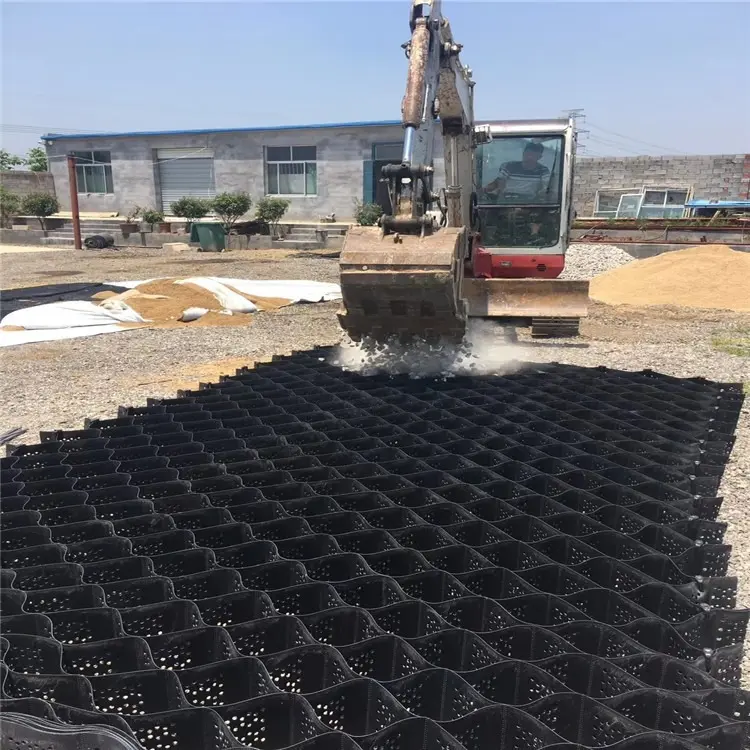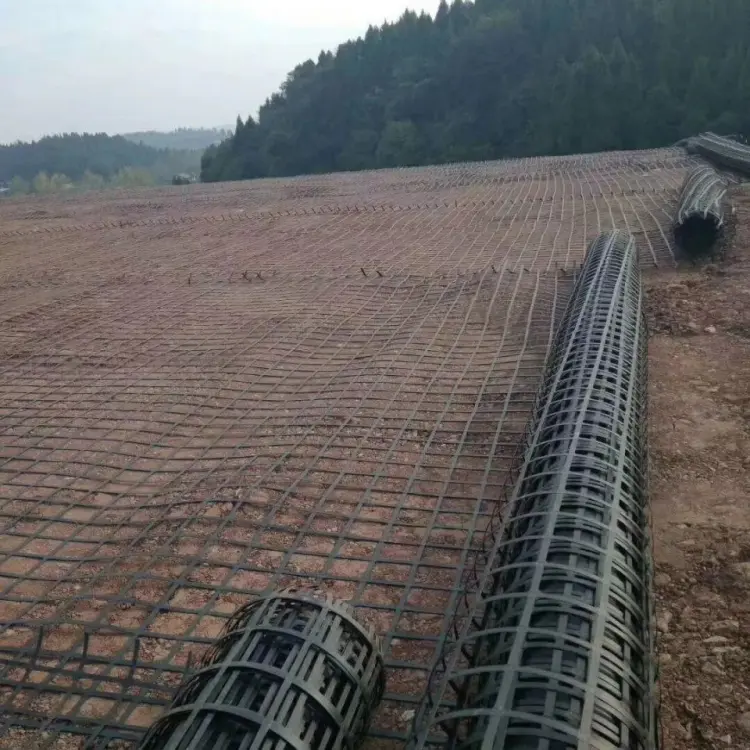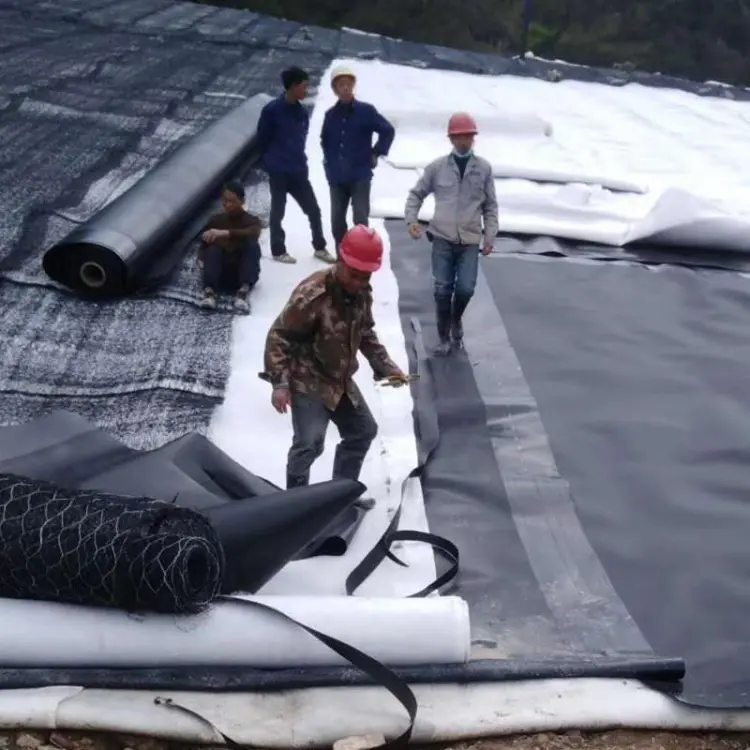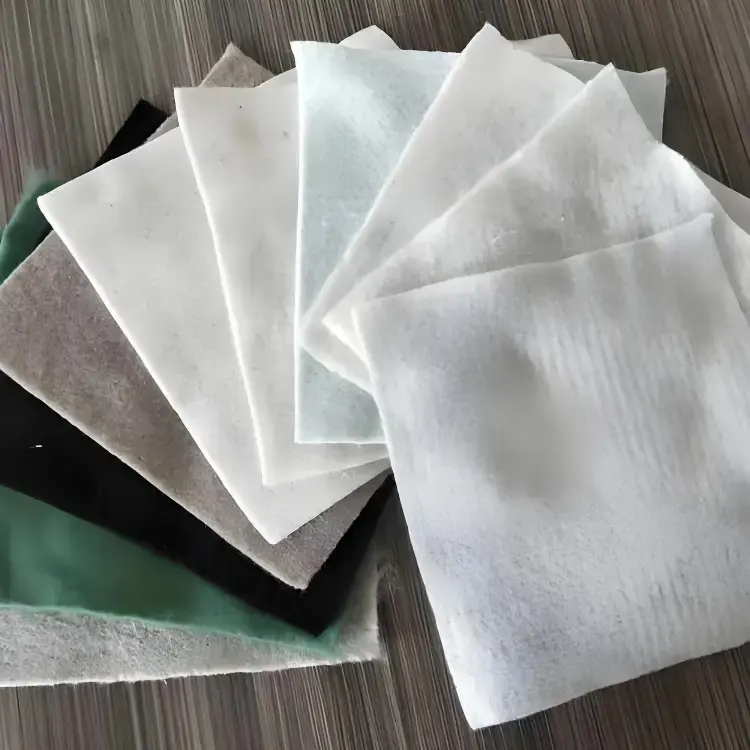Honeycomb geocells (3D cellular structures) and traditional geogrids (2D planar grids) offer distinct advantages in foundation reinforcement. Here’s a performance and cost comparison based on industry standards:
I. Material Properties & Costs
A. Honeycomb Geocell
- 3D Cellular Structure: High-density polyethylene (HDPE) honeycomb design distributes loads multidirectionally, enhancing soil confinement and stability.
- Durability: Resists corrosion, extends service life (+50 years), and reduces long-term maintenance.
- Installation Efficiency: Modular assembly enables rapid deployment, cutting construction time by >60%.
- Cost Efficiency: Higher initial investment offset by 30%+ material savings and reduced earthwork/equipment needs.
B. Traditional Geogrid
- 2D Grid Structure: Relies on tensile strength to reinforce soil unidirectionally, limiting lateral stability.
- Complex Installation: Requires extensive compaction and longer construction cycles.
- Lifecycle Costs: Lower upfront cost but 40% higher maintenance due to deformation risks.

II. Application-Specific Advantages
| Scenario | Honeycomb Geocell | Traditional Geogrid |
|---|---|---|
| Soft Soil | 3D confinement boosts load capacity by 40%, prevents lateral displacement | Limited to shear resistance enhancement |
| Slope Protection | Controls erosion via hydraulic dispersion + root anchoring | Primarily resists surface sliding |
| Eco-Engineering | Promotes vegetation growth for integrated bio-mechanical stabilization | Minimal ecological synergy |

III. Cost-Benefit Breakdown
A. Material Costs
- Geocell: 15–20% higher initial cost
- Geogrid: Lower upfront but ↑30% replacement frequency
B. Construction Costs
- Geocell: Saves >40% labor/time via modular design
- Geogrid: Longer site prep + compaction requirements
C. Lifecycle Costs
| Metric | Geocell | Geogrid |
|---|---|---|
| Maintenance Frequency | 50% lower | High (soil migration) |
| Service Life | 50+ years | 20–30 years |
| Total Cost Savings | 40% ROI | Higher long-term expenses |
Conclusion
Honeycomb geocells deliver superior long-term value through:
- 40%+ load-bearing enhancement
- 60% faster installation
- 50% lower maintenance
- 40% lifecycle cost reduction
While geogrids suit basic reinforcement, geocells optimize budgets for soft soils, slopes, and sustainable projects. Selection should prioritize structural requirements, site conditions, and total ownership costs.

